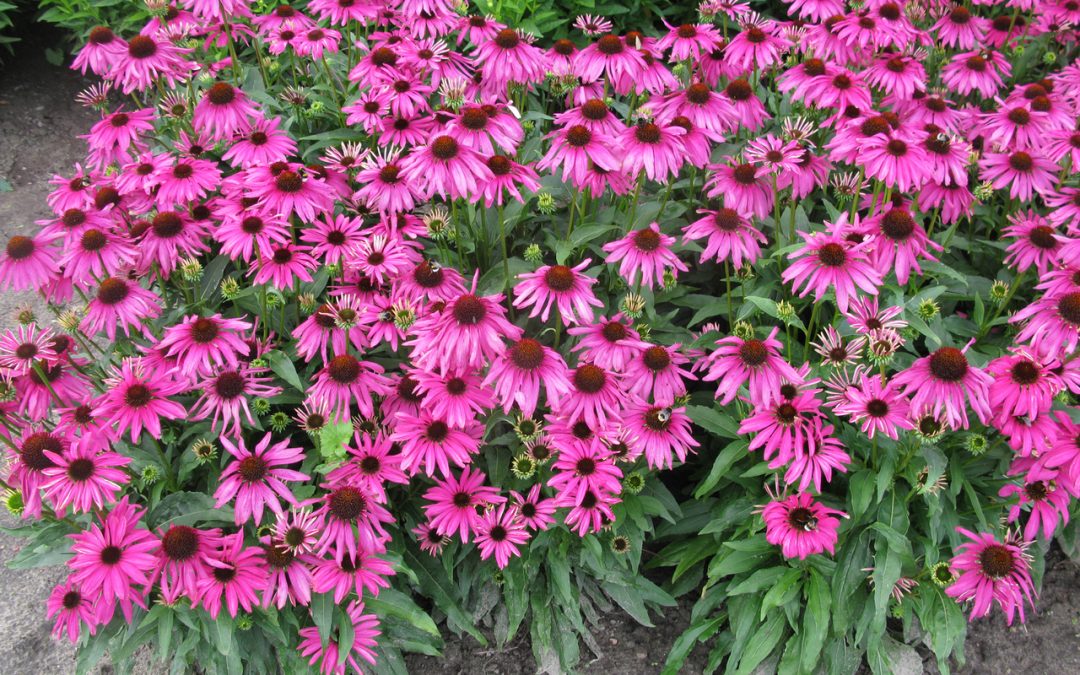About Heronswood Echinacea
We are in an exciting period – a veritable explosion in selections of brightly-colored coneflowers has taken place. What was a long-forgotten meadow and prairie native genus is finally being appreciated for its uniqueness, adaptability, durability, and even medicinal uses. With attention from breeders such as those at the Chicago Botanic Garden, in Holland and Georgia, gardeners’ choices have jumped from one species of standard stalky purple to a slew of hybrids in a rainbow of colors, a variety of flower forms, and on plants from short to tall. Even an endangered species, Echinacea paradoxa, we now offer for its unique color and refined form – attributes found useful in breeding the latest hybrids. Heronswood offers you the best of these selections.
How to care for your Heronswood Echinaceas
Echinacea are hardy, easily-grown perennials but should be planted soon after receiving them. Just make sure as with all new plant arrivals that the soil is kept moist (but not soaking wet), and the plant is held in an outdoor location protected from direct sunlight. The north side of your house or an unheated garage make excellent holding places. If you do not plan on planting for at least a week, consider heeling/trenching the plant into the north side of the garden. You’ll need to pay attention to the moisture, keeping the root zone moist to the touch.
Where do I plant my Echinacea?
If you like echinaceas and have a sunny site in which to plant them, you are on your way to success. Discouraged by soils that are dry and rocky? Echinaceas will succeed if they are of average fertility such conditions will suffice. Although they tolerate a bit of shade, the coneflowers like it sunny, hot, and humid (unlike most gardeners)!
How do I plant my Echinacea?
Dig a hole that is twice as wide and deep as the container the plant is in. Incorporate some organic matter (humus, compost, peat moss, and the like). Backfill the hole and set the plant "crown" (just above where the roots meet the stem) even with ground level, firming the soil around the roots. Water-in well as with any new planting.
What should I do in order to have my Echinacea increase in beauty from year to year?
To "deadhead" or not? As the flowers fade in late summer, the cones will soon bear seeds that are a favorite food of goldfinches. The flower stalks and "cones" can be left standing at the end of the season to provide winter interest. On the other hand, removing faded flowers prolongs the blooming period. Also, Echinacea purpurea cultivars and E. paradoxa will set viable seed and over time seedlings will sprout and add to your plantings.
Echinaceas are relatively drought-tolerant perennials but supplemental watering (a deep soak once per week) is beneficial in the first year after planting.

